CSIS Journalism Bootcamp: Student Perspectives
Gaza Through Whose Lens?
Breaking Apart U.S. Coverage of the Israel-Hamas War
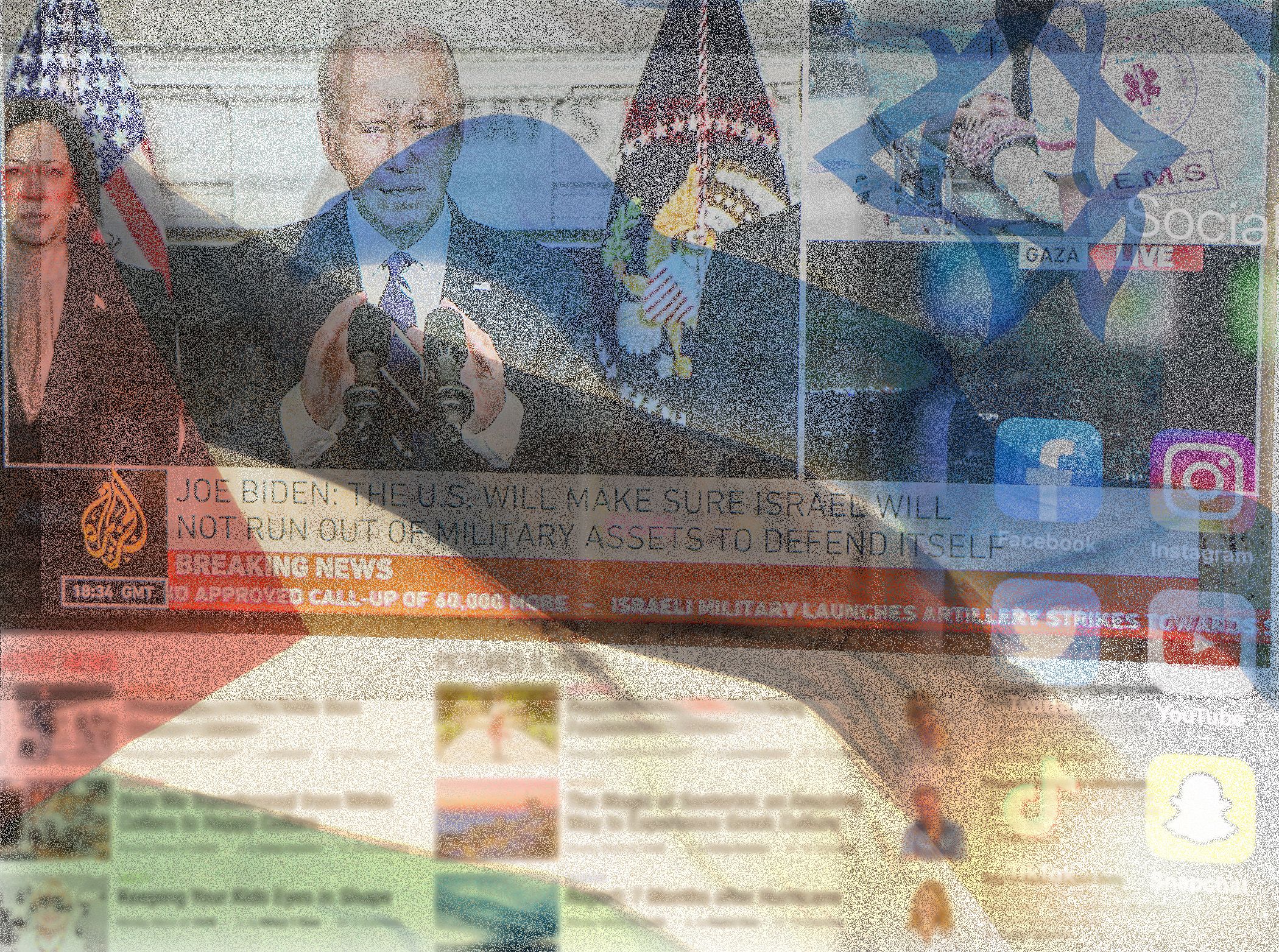
This story was produced by students from the Aristotle University of Thessaloniki in December 2023.
Introduction
The war between Israel and Hamas has been covered and discussed widely across both traditional and social media. However, some of this reporting has amplified biased views about the affected communities.
This has had substantial impacts on people in the conflict zone and across the world. Misinformation and biases found in reporting on social media about the war in Gaza and extremism have had severe consequences for the Jewish-American, Muslim-American, Palestinian-American, and Arab-American communities. This bias and misinformation can lead to further polarization, which can further marginalize members of these communities, with an increase in incidents of anti-Semitism and Islamophobia, including hate crimes.
Experts have long identified a “backlash effect” of rising attacks against Arabs, Muslims, and Jews on the heels of conflict between Israel and its neighbors. The Hamas attack on October 7, coming after a period of diminished hostilities, has kicked off a new and dangerous era of the conflict and its depictions in the global media environment.
The October 7 Attack
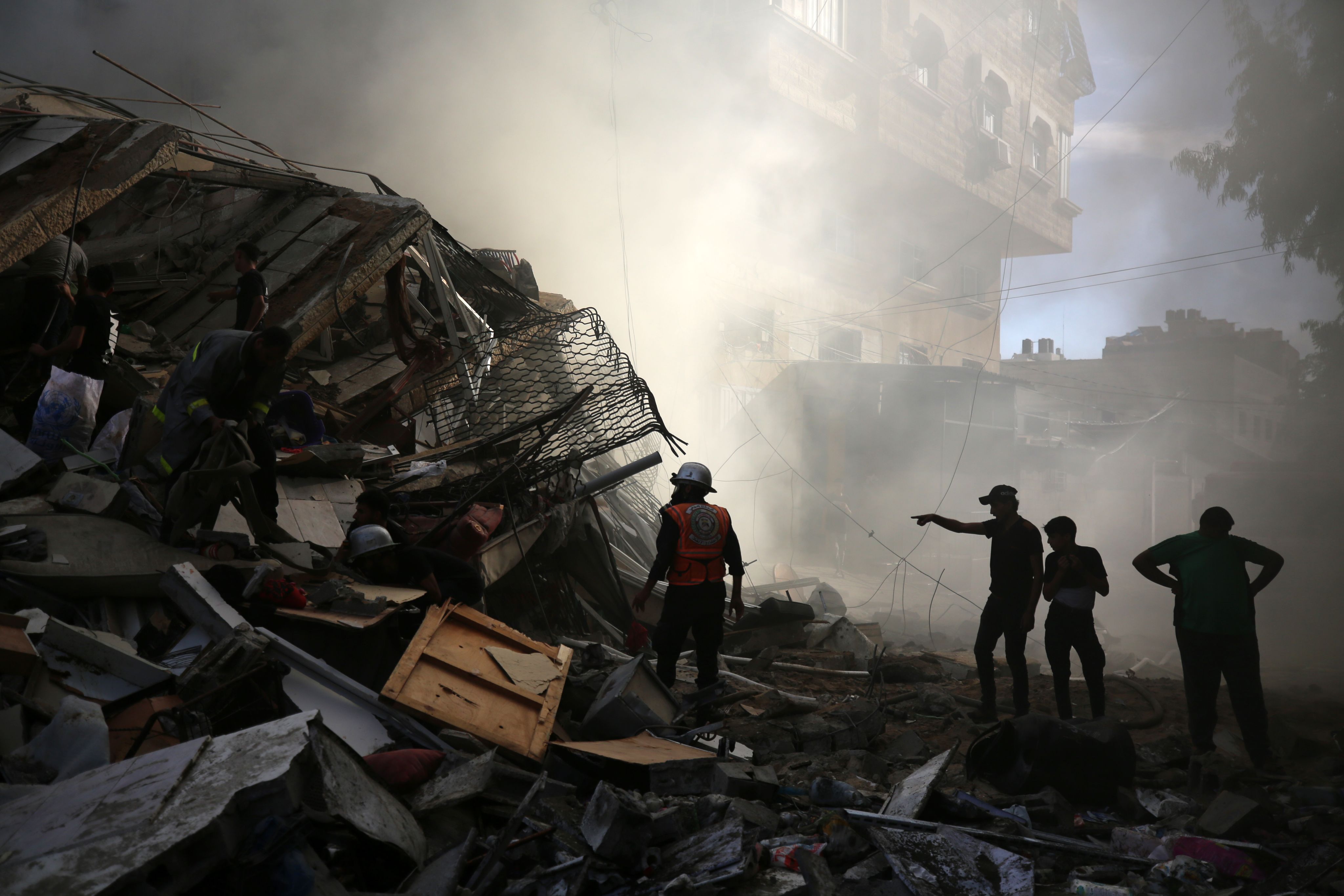
On the morning of October 7, 2023, hundreds of Hamas militants executed a well-planned attack on Israel and its citizens.
Militants disabled Israel’s border security sensors, attacked Israeli military bases near the border, and spent hours moving almost unopposed through Israeli territory, killing hundreds of civilians. By the time the Israeli military mobilized and drove them out, around 1,200 Israelis had been killed, and over 200 more had been taken captive in Gaza.
Israel quickly responded with its most intense bombing campaign to date, on October 27, accompanied by a ground invasion that is still ongoing as of April 2024. To date, over 32,000 Palestinians have been killed in the Gaza Strip, according to Gaza’s health ministry.
The conflict was immediately covered as the leading story in news outlets across the United States and around the world. But while American coverage in the wake of the October 7 attack was broadly sympathetic to Israel, schisms have emerged as civilian casualties have mounted in Gaza, leading segments of public opinion to turn against Israel’s military response.
Shaping the Narrative
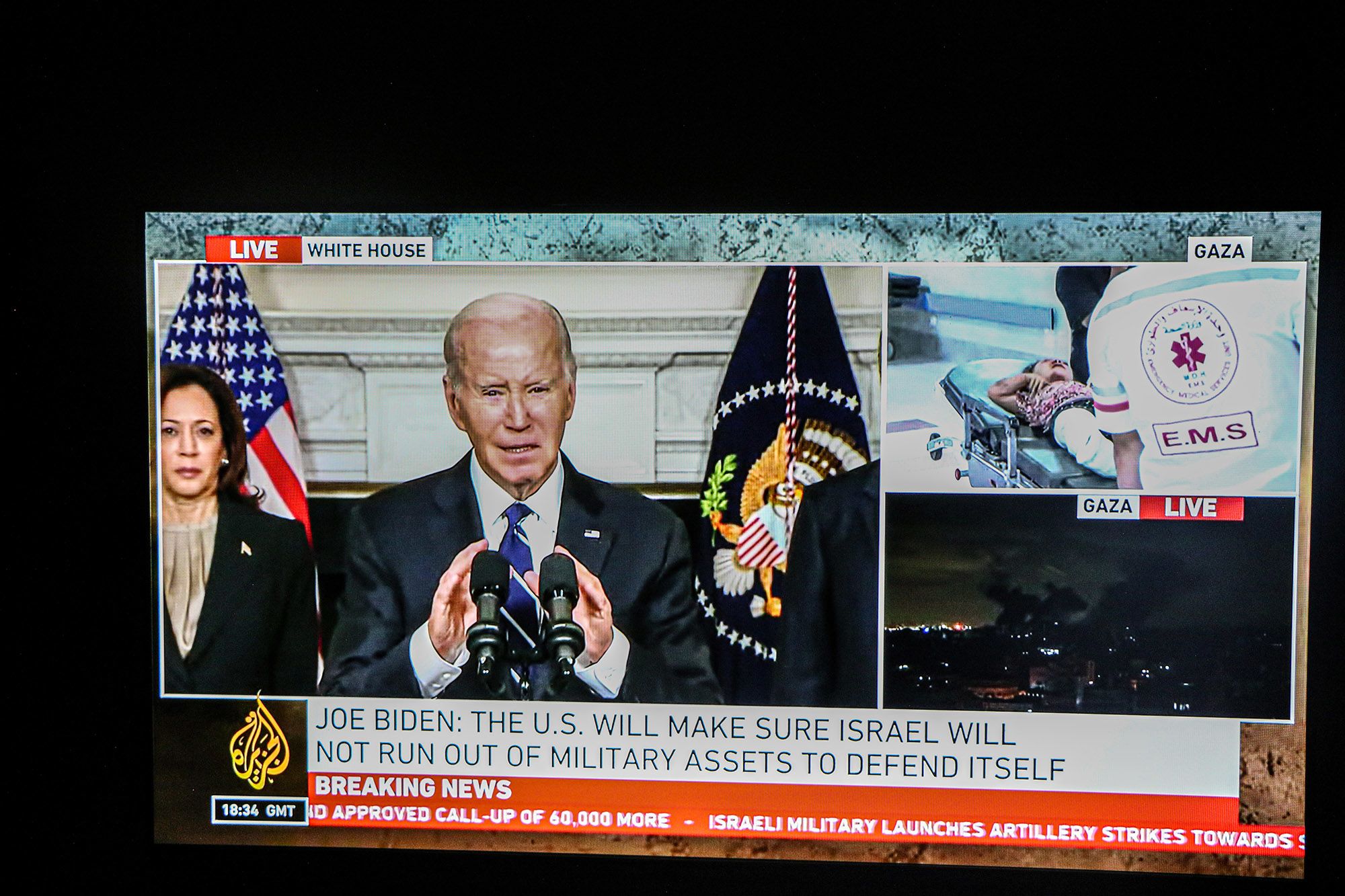
As the war in Gaza has continued, there has also been a war of representation taking place in the media. Decisions made by the media—from what stories to cover, to what words to use in headlines, to what images to show—significantly influence the public’s perception of the subjects they cover.
One example from early in the conflict was the deadly blast at the Al-Alhi hospital. Well before the facts of that incident had been established, word choices in headlines had lasting impacts on how the event was understood. Issues of word choice have been the subject of fierce debate. For example, the BBC was criticized for its policy not to describe Hamas as “terrorists.” In response, veteran BBC correspondent John Simpsons said, “We don’t take sides. We don’t use loaded words like ‘evil’ or ‘cowardly.’ We don’t talk about ‘terrorists.’ And we’re not the only ones to follow this line. Some of the world’s most respected news organizations have exactly the same policy.”
A Narrow Perspective
These are important debates, and some critics argue that Western news outlets must contend with deeper structural issues in order to resolve them. They contend that Western media outlets are too dependent on foreign correspondents over voices rooted in the regions they are covering. Given the Israeli government’s tight restrictions on foreign journalists entering Gaza, there is a key role to be played by Palestinian journalists on the ground. But in the current conflict, they face conditions more dangerous than in any other modern conflict.
According to the Committee to Protect Journalists, as of March 27, 95 journalists and media workers were confirmed dead, including 90 Palestinians, with dozens more injured, missing, or arrested.
UN human rights experts have raised alarm over these conditions, imploring the Israeli government to “allow journalists to enter Gaza and protect the safety of all journalists in the Occupied Palestinian Territory.”
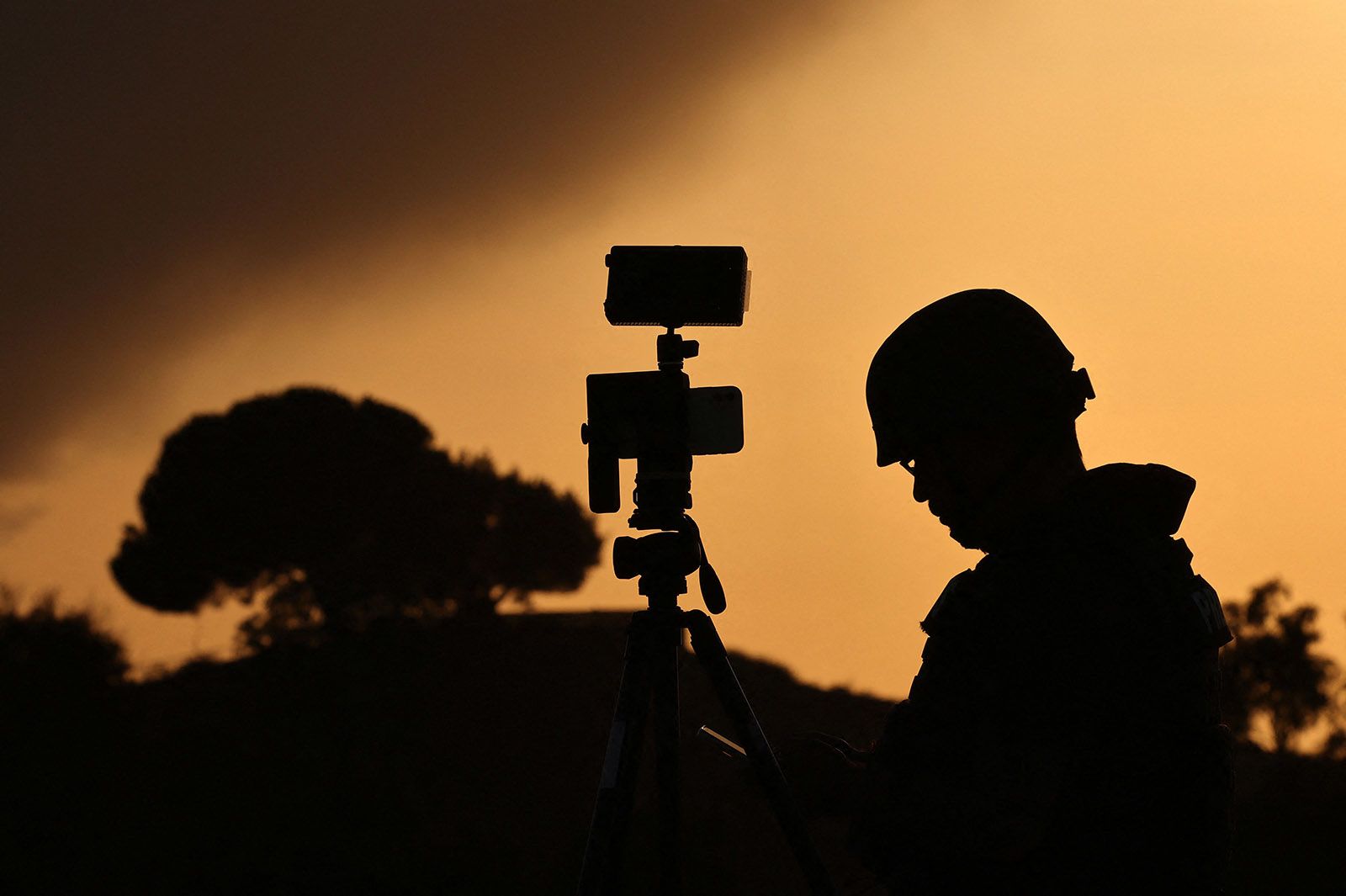
A member of the media stands behind his camera at a spot overlooking the Gaza Strip in the southern Israeli city of Sderot, on October 26, 2023, amid ongoing battles between Israel and the Palestinian Hamas movement. | Photo by Jack Guez/AFP via Getty Images
A member of the media stands behind his camera at a spot overlooking the Gaza Strip in the southern Israeli city of Sderot, on October 26, 2023, amid ongoing battles between Israel and the Palestinian Hamas movement. | Photo by Jack Guez/AFP via Getty Images
From the Israeli side, military spokesman Nir Dinar said that Israel “has never and will never deliberately target journalists” and attributed the deaths of journalists during the conflict to the inherent risks of reporting from a combat zone. But the unprecedented number of journalists impacted compared to other modern conflicts suggests that the Israeli government is not blameless.
Beyond the immediate dangers presented by the Israel-Hamas war, Palestinian journalists face countless obstacles to reaching a Western audience. In a pre-war interview, Gaza-based journalist Maram Humaid lamented the Western media’s focus on war at the expense of other Palestinian stories, as well as their “distrust” of Gazan voices: “International media doesn’t trust local sources, organizations, and ministries. Not even local journalists.”
In addition, Gaza’s media ecosystem was already undermined by not only the effects of Israeli occupation, but also pressure from Hamas against dissenting voices.
Gazan journalists have continued to work under these dire conditions. But their perspectives, which are essential to creating a more complete picture of the conflict, will likely continue to be underrepresented in Western media until conditions on the ground grow safer and structural barriers in the media industry can be overcome.
From Television
to TikTok
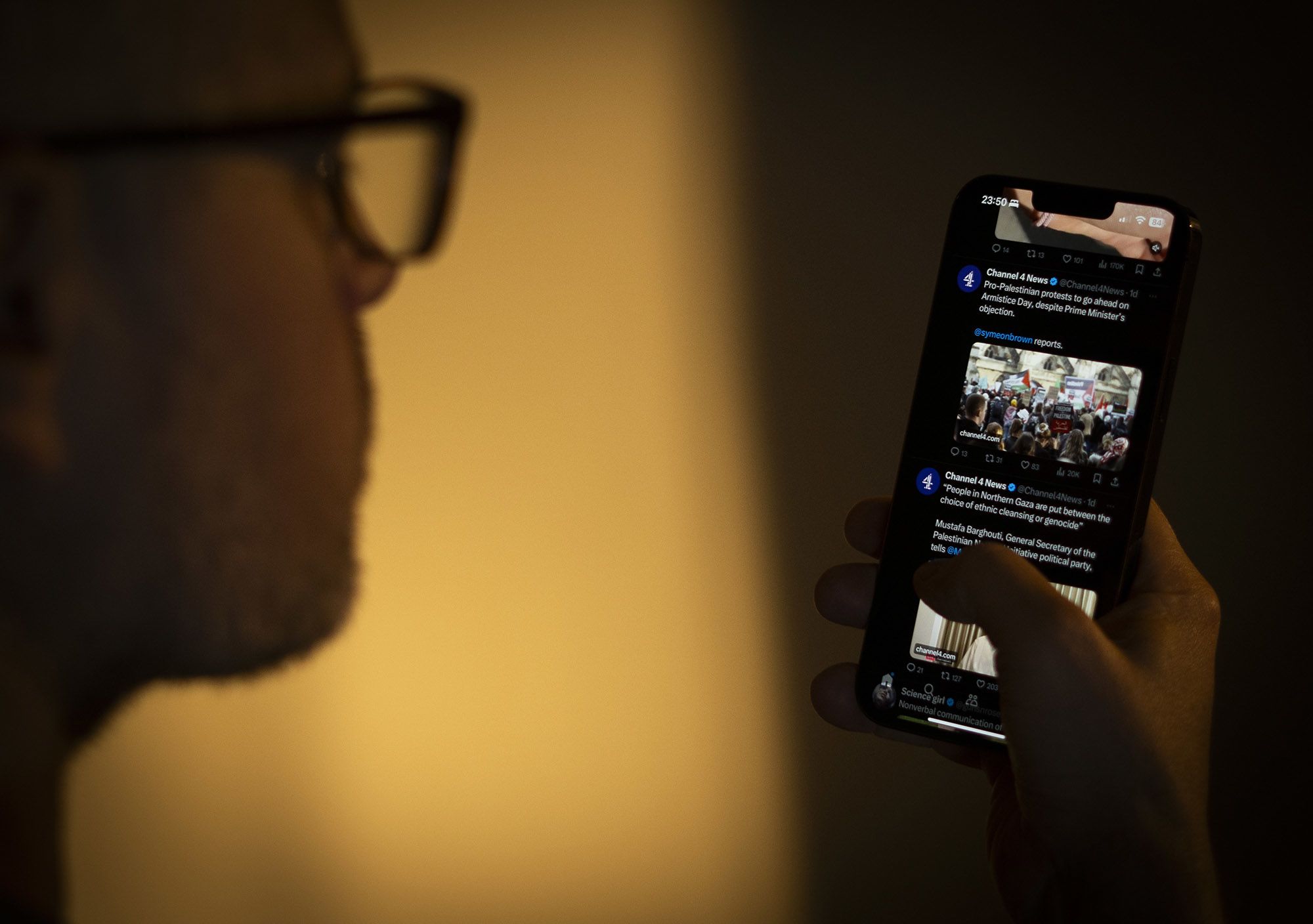
On social media, many of the barriers and gatekeepers that exist in traditional media are not a factor. Indeed, Gazan journalists have had significant success in reaching audiences on platforms such as X, Instagram, and TikTok. But the openness of social media also creates its own problems of representation and misrepresentation when it comes to the Israel-Hamas conflict.
Social media influences the way Americans, especially young Americans, perceive the conflict. Younger audiences get more of their news from social media—particularly TikTok and Instagram—than from traditional media such as newspapers and television. And while these traditional outlets and the journalists that work for them still exert significant influence on these platforms, other voices also drive conversations about current events.
Instead of balancing both sides of a story, as traditional media would often attempt to do, social media algorithms often show a user only one perspective. According to Michelle Strucke, director for the Humanitarian Agenda and the Human Rights Initiative at the Center for Strategic and International Studies, this feature of social media algorithms is “causing this tunnel vision where many people, whatever their perspective, are getting fed the same things over and over again. That makes it difficult for them to understand the perspective of others.”
Social media provides users with a vast number of viewpoints, but without the fact-checking and credibility offered by established media organizations, it falls to users to gauge the reliability of what they are seeing. And though platforms have devoted some resources to helping users understand the context of what they are seeing, these efforts are only scratching at the surface of the problem.
Especially in war zones, social media allows for unfiltered, raw glimpses of the reality of people on the ground. “A person’s perspective that is in the middle of a conflict zone is extremely valuable. Their feelings are 100% right,” Strucke said. “At the same time, when people are viewing this coverage, it’s important to remember that the person in that spot might not have all the facts or the pictures that are going to emerge from sources.”
While first-person perspectives are vital, they can only capture one person’s view of a larger event. On social media, such un-curated content lacking in context can lead users to miss the whole picture and see only a part of it.

A man records a video with his mobile phone of rockets being fired from Gaza City towards Israel on October 7, 2023. | Photo by Mohamed Abed/AFP via Getty Images
A man records a video with his mobile phone of rockets being fired from Gaza City towards Israel on October 7, 2023. | Photo by Mohamed Abed/AFP via Getty Images
Global Voices
Although images directly from the conflict initiate a lot of conversation on social media, most of the people engaging in those conversations do not have direct ties to the region. These outside commentators can still be very influential drivers of opinion, building a version of the conflict for their large group of followers.
Some pro-Israel influencers are already established conservative voices, such as Ben Shapiro, who has over 6 million followers on X. While they post about the conflict itself, they also frequently post about pro-Palestinian protests in American cities and on college campuses. Some of their harshest rhetoric is reserved for these protestors, who they often label as pro-Hamas or pro-terrorist.
Pro-Palestinian content is more concentrated on other social media platforms, particularly TikTok. Some have speculated that the company’s algorithm has pushed pro-Palestinian content and suppressed pro-Israeli perspectives. But the company claims that the difference is due to demographics. Tiktok’s user base trends younger, which corresponds with a greater pro-Palestinian perspective among American youth.
Misinformation on Traditional & Social Media
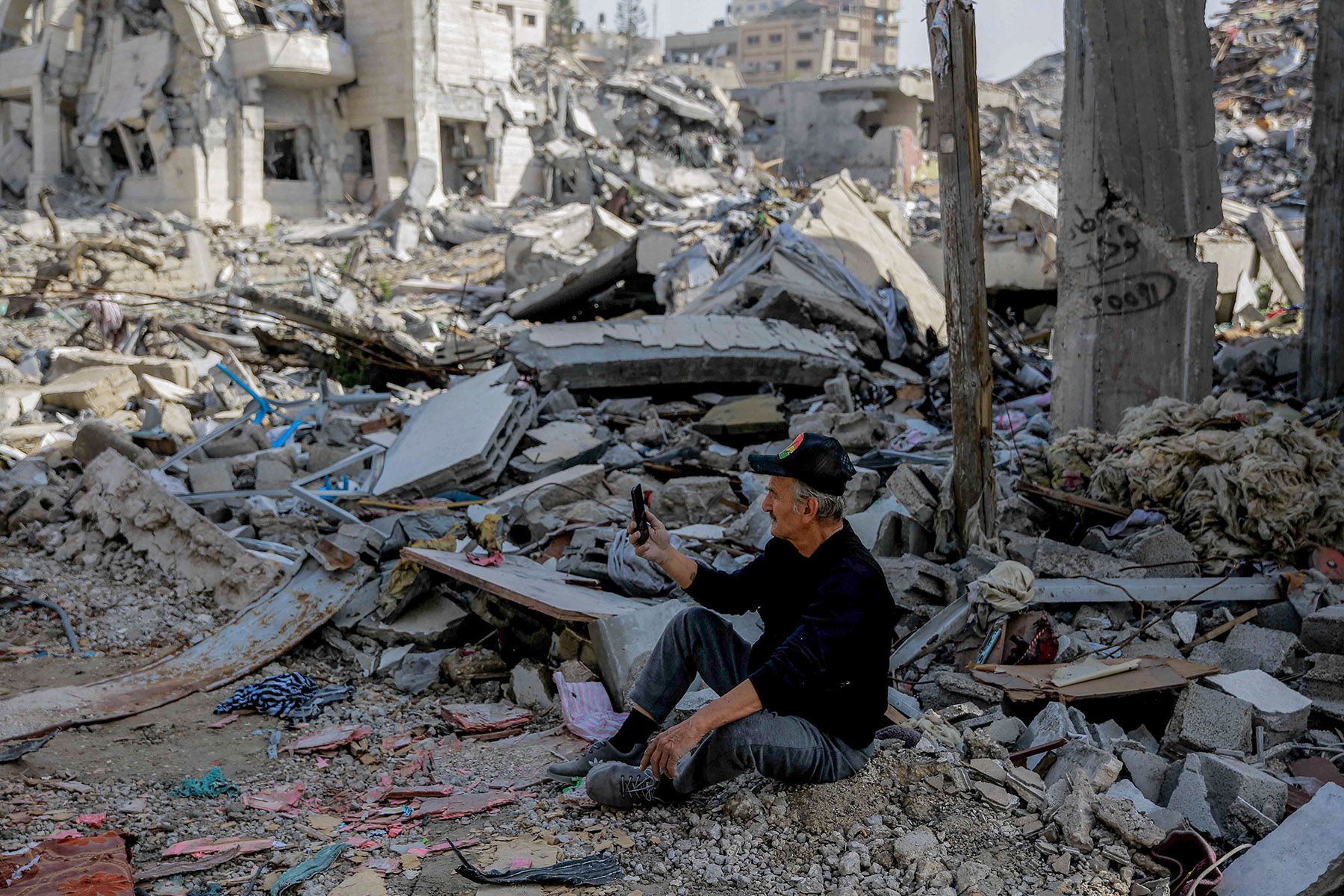
While social media has exposed people to graphic and unfiltered images from both sides of the conflict, not all of those images are what they claim to be. Images taken out of context—including some from other conflicts—are shared alongside genuine ones, sometimes spreading widely before they can be debunked.
According to the Washington Post, there is some evidence of disinformation—falsehoods spread intentionally to pursue an objective, often by foreign actors—spread by foreign actors such as Iran. Other incidents are difficult to credit to a particular actor but demonstrate coordination in spreading false information.
However, misinformation—false or misrepresented stories spread unintentionally—have been commonplace and have often originated directly from the region. Fact-checkers have debunked countless images and videos that claim to show scenes from the Israel-Hamas conflict but in fact show past conflicts in the region, other parts of the world, or even scenes from movies or video games.
While many of these examples may be honest mistakes, they still have real consequences. As Imran Ahmed, CEO of the Center for Countering Digital Hate, told CNN, “Sharing stuff that you’re not sure of contributes to an overall sense that no one can trust what they’re seeing.”
While much of this activity stokes fear and mistrust between the parties to the conflict, damaging misinformation has also had an impact on Israel’s domestic politics. For instance, for 24 hours after October 7, #traitorsfromwithin became the number one trend on X because of a conspiracy theory that Israel’s government allowed the attack.
Extreme voices and misinformation on social media reinforce polarization, exacerbating divisions in public opinion. This activity also poses a threat to democracy and society broadly, such as through polarizing language that can be used on social media to dehumanize specific groups.
When talking about the media coverage of the war between Israel and Hamas, discussion of the use of dehumanizing language and its effects on the respective communities is critical. Nick Halsman, a professor of psychology at University of Melbourne, was quoted in a recent BBC article saying, "There's surprisingly little evidence that dehumanizing language causes violent behavior, but plenty of evidence says it accompanies it.’’
Terms of Endangerment: Conflation & the Conflict in Gaza
Psychologists have shown that people who dehumanize others are more likely to treat them badly. The use of dehumanizing language is linked with people’s willingness to harm the dehumanized group. At the same time studies have found that people who are exposed to descriptions of groups of people or individuals with animalistic terms are more likely to endorse the use of torture on them compared to people with similar backgrounds who are exposed to positive descriptions of the same groups.
Hateful Hashtags
One highly visible expression of extreme rhetoric on social media has been the widespread use of hashtags with extreme messages. One troubling example was #HitlerWasRight, which appeared on October 7 on X. Over the next month, this hashtag was used more than 46,000 times. As for the hashtag #deathtomuslims, it appeared on the day of the attack as well and was posted thousands of times on X. The Institute for Strategic Dialogue found an over 50-fold increase of antisemitic comments on YouTube videos about the Israel-Palestine conflict following the Hamas attacks.
Recent changes at X, including cuts to moderation as well as the trust and safety teams, have possibly slowed responses to these trends and have potentially allowed misinformation on the conflict to spread more quickly.
Social media platforms do have policies against both false information and hate speech and have attempted to enforce them during the conflict. For example, between October 7 and October 31, 2023, TikTok removed more than 925,000 videos from the conflict region. But such content is too widespread to be dealt with consistently or immediately.
Violent Rhetoric, Violent Actions
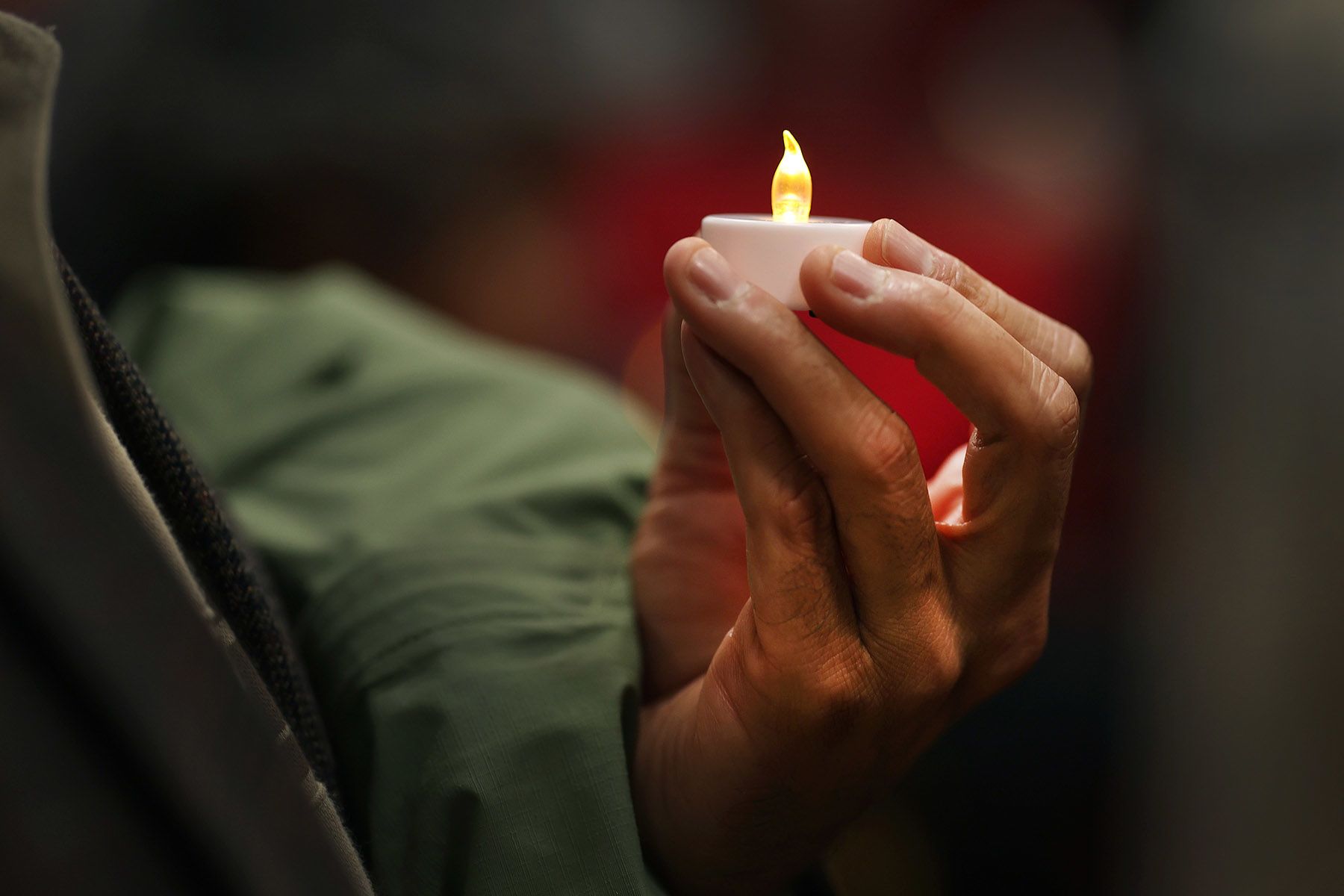
Misinformation, combined with the use of dehumanizing language that dominates media platforms, has been proven to have real-life consequences. Nick Halsman, a professor of psychology at the University of Melbourne, recently told the BBC, “There’s surprisingly little evidence that dehumanizing language causes violent behavior, but plenty of evidence says it accompanies it.”
Studies have found that people who are exposed to descriptions of groups of people or individuals with animalistic terms are more likely to endorse the use of torture on them compared to people with similar backgrounds who are exposed to positive descriptions of the same groups.
It is thus understood that the hostility that is observed in the media is connected with hate crimes in real life. For example, the recent killing of a six year-old Palestinian American by his landlord was directly linked with the attacker’s consumption of radio news about the October 7 attacks.
At the same time, data from the Anti-Defamation League showed a 360 percent rise in anti-semitic incidents in the three months after the start of the conflict. This included dozens of physical assaults and hundreds of incidents of vandalism, including at synagogues and other Jewish sites.
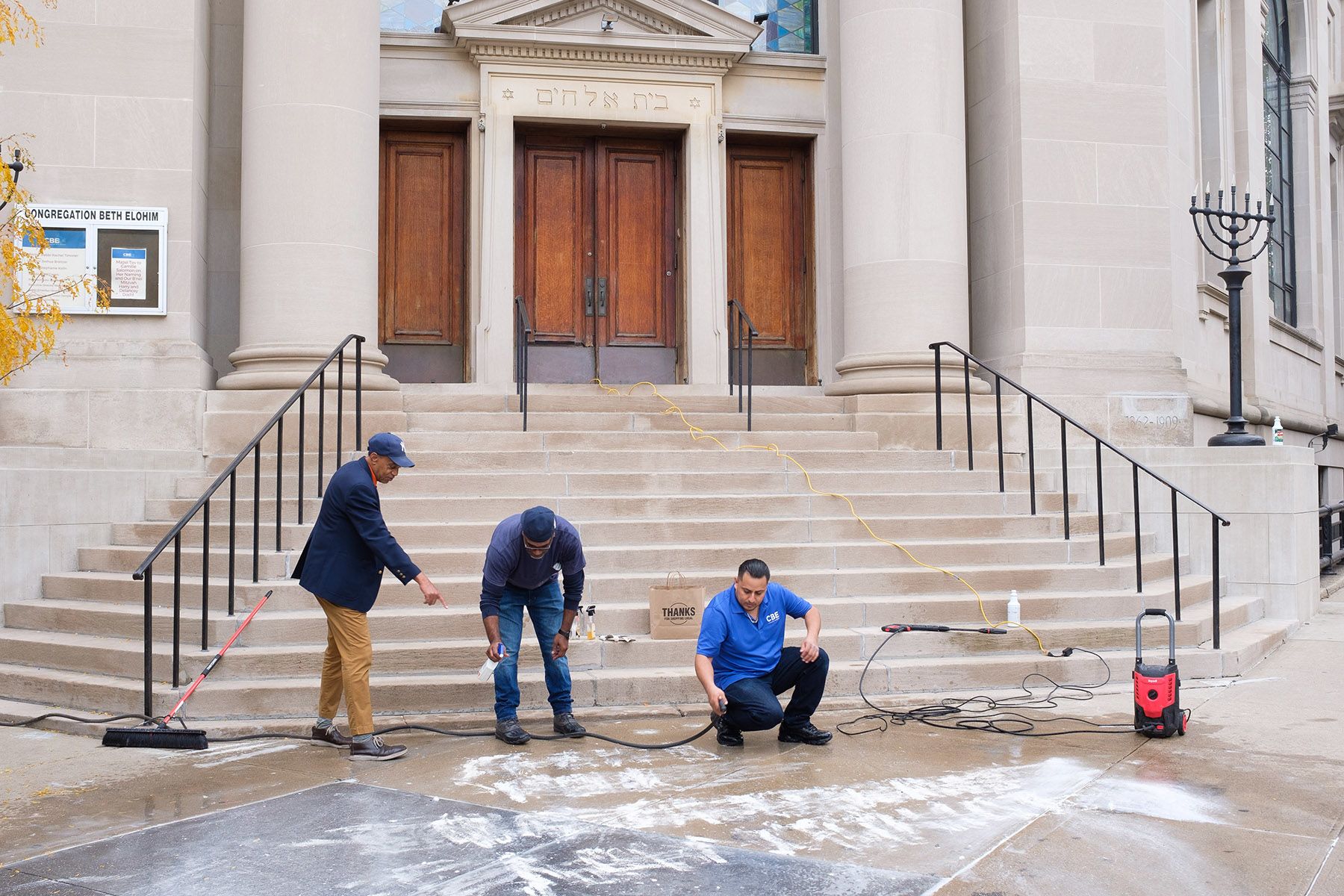
Workers clean graffiti from the sidewalk in front of Congregation Beth Elohim synagogue on 8th Avenue in Park Slope, Brooklyn, New York City on Friday, October 27, 2023. | Gardiner Anderson for NY Daily News via Getty Images
Workers clean graffiti from the sidewalk in front of Congregation Beth Elohim synagogue on 8th Avenue in Park Slope, Brooklyn, New York City on Friday, October 27, 2023. | Gardiner Anderson for NY Daily News via Getty Images
Conclusion
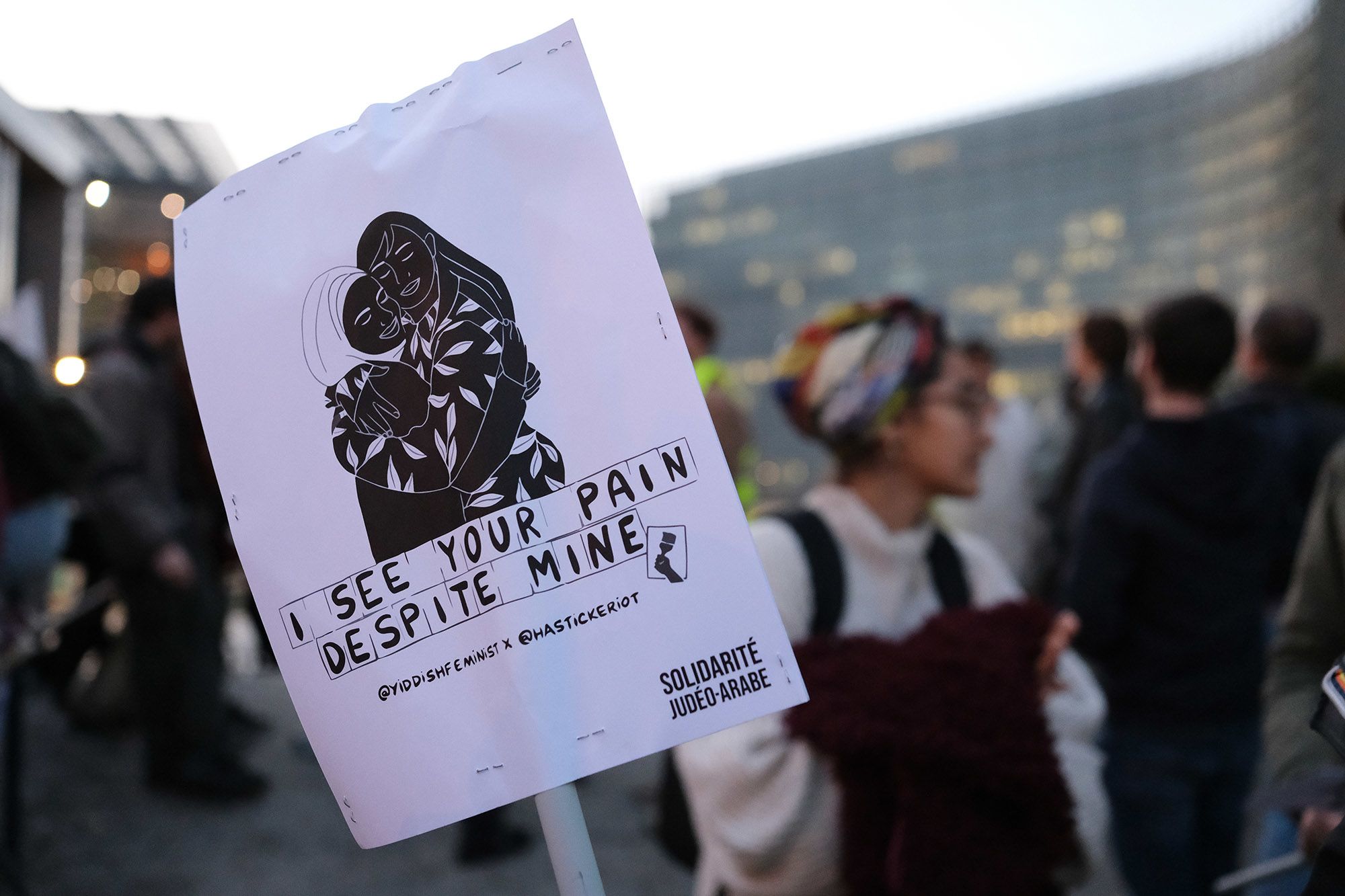
Polarization in the media regarding the Israel-Palestine conflict has consequences. The inflammatory language of the U.S. media’s coverage of the conflict influences the perception that different communities have of each other and can even be the cause of acts of hate.
The challenge for journalists and the public is navigating a complex media environment to understand and evaluate the situation accurately. There are issues with bias in both traditional and social media; sources in both may aim to provoke an emotional reaction and not necessarily give the audience an accurate view of events.
Finding a middle ground that encourages open dialogue without inciting further division is crucial in order to encourage social cohesion. This involves promoting responsible and respectful discourse while elevating diverse and local perspectives. Encouraging fact-based discussions and fostering empathy toward differing viewpoints could help bridge the gap among the polarized narratives across the media ecosystem.
Authors

Audio Team
Vasilis Dimokas is a student in Journalism department in AUTH. He has professional experience in writing, editing and making videos, managing communication projects and campaigns. He had been working as a news editor and reporter in Thessaloniki for the last year. At the same time he is collaborating with two political offices as a member of their communication groups. He manages video communication.

Data Team
Eleni Chantzi is pursuing degree in Journalism and Mass Media at Aristotle University of Thessaloniki. She has recently started working as social media manager for two local companies and moreover she works part time as a real estate consultant. She has a wide array of interests, ranging from history of mass media and journalism to art and music.
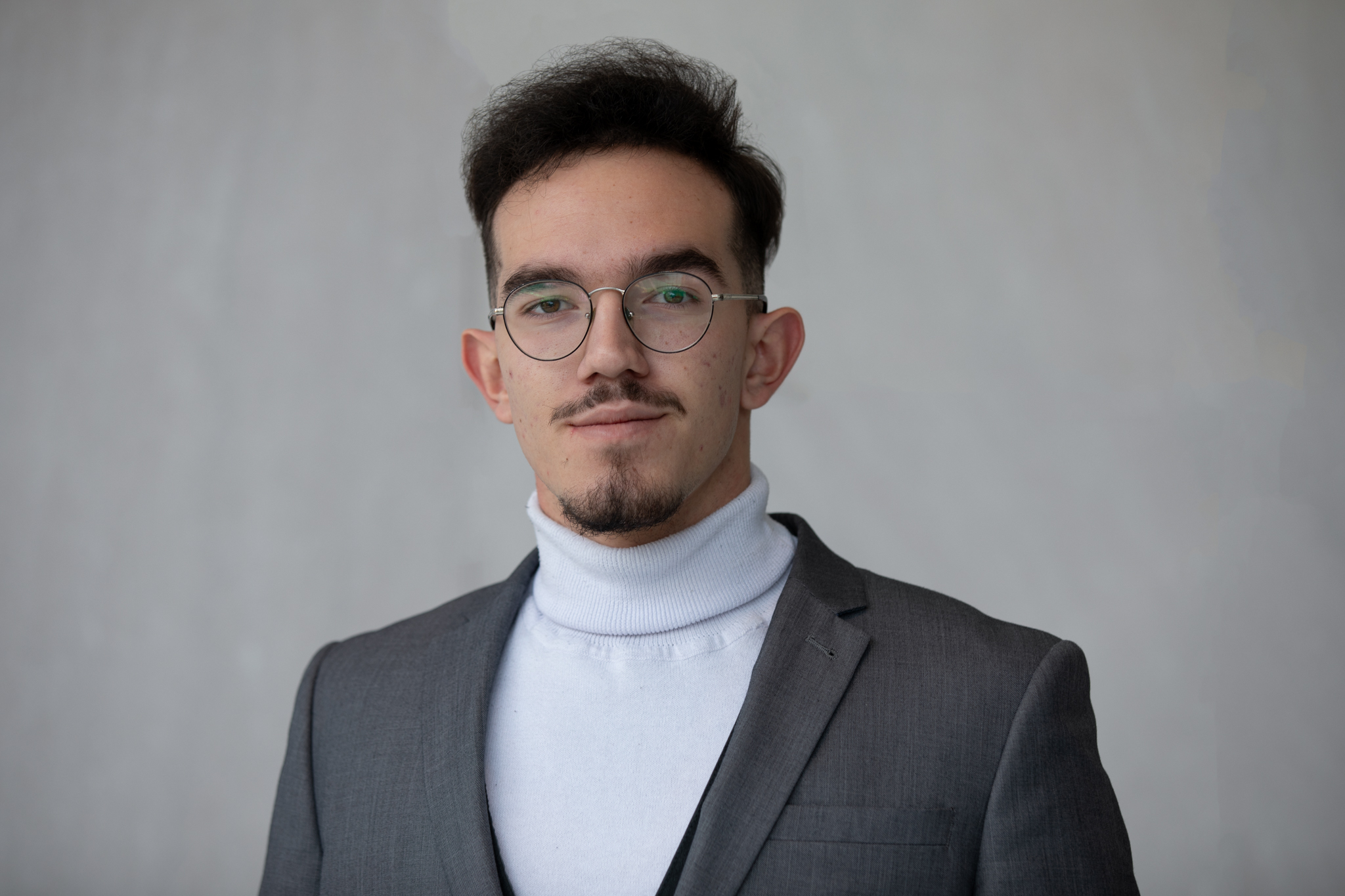
Video Team
Dimitris Eleftheriadis is pursuing his bachelor's degree in Journalism and Communication, while he is running an online platform named "Thinking Abyss" where a 50+ member team creates multimedia content on a variety of subjects. He has experimented on writing articles, interviewing and video editing, with political communication, cinematography and social psycology being his favorite fields. Currently, he's been invested in the art of non-fiction storytelling and investigative methods working on a documentary discussing journalism ethics in Greece.
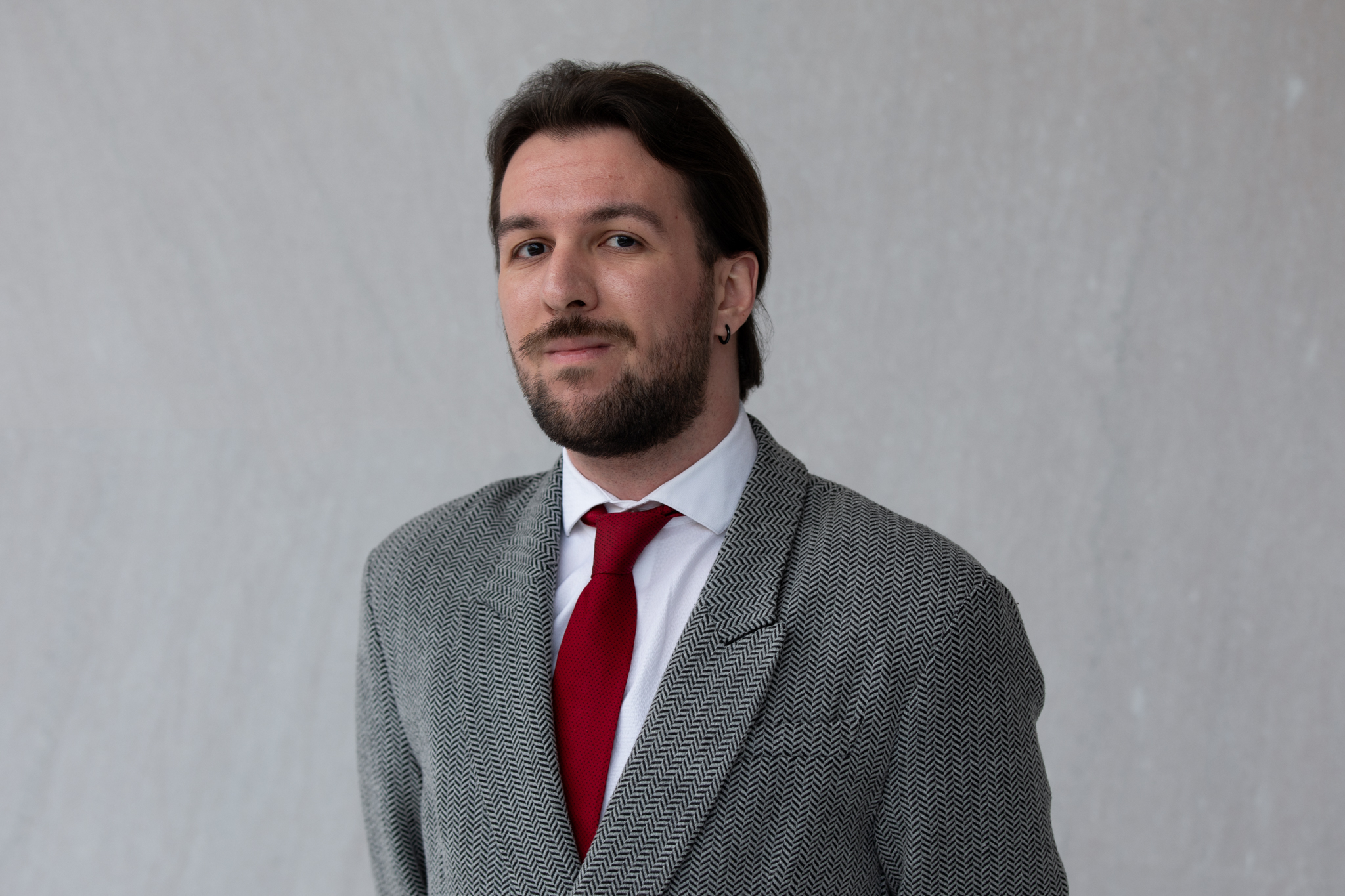
Story & Web Team
Georgios's academic background spans the humanities (history, archaeology, philosophy), and he is currently pursuing his master’s degree in Political Communication from the Aristotle University of Thessaloniki. He contributes to the International Peace Journalism Lab as an Associate Researcher. Georgios has worked inter alia as a field reporter conducting interviews about political history, sports, and with intellectuals. He has worked as a communication consultant for an NGO and as a magazine journalist. He holds a distinction from the Panhellenic Literary Association for a short story. Georgios is also a member of Amnesty International Greece. His academic interests revolve around crisis communication, the role of media as diplomatic actors and the coverage of wars and crises, as well as advocating for the safety of journalists.

Story & Web Team
Charikleia Christina (Klea) Konstantinidou is an undergraduate student of the School of Journalism and Mass Communications of Aristotle's University of Thessaloniki. As a middle and high school student she had an interest in theater and she participated in 3 International Theatrical Festivals in Europe for Amateur Drama Groups. She is fluent in English and French and she holds ECPE degree in English and DELF B2 in French. Journalism was her first choice for Univeristy studies, and she is very interested in international politics, human rights, art and various global matters.
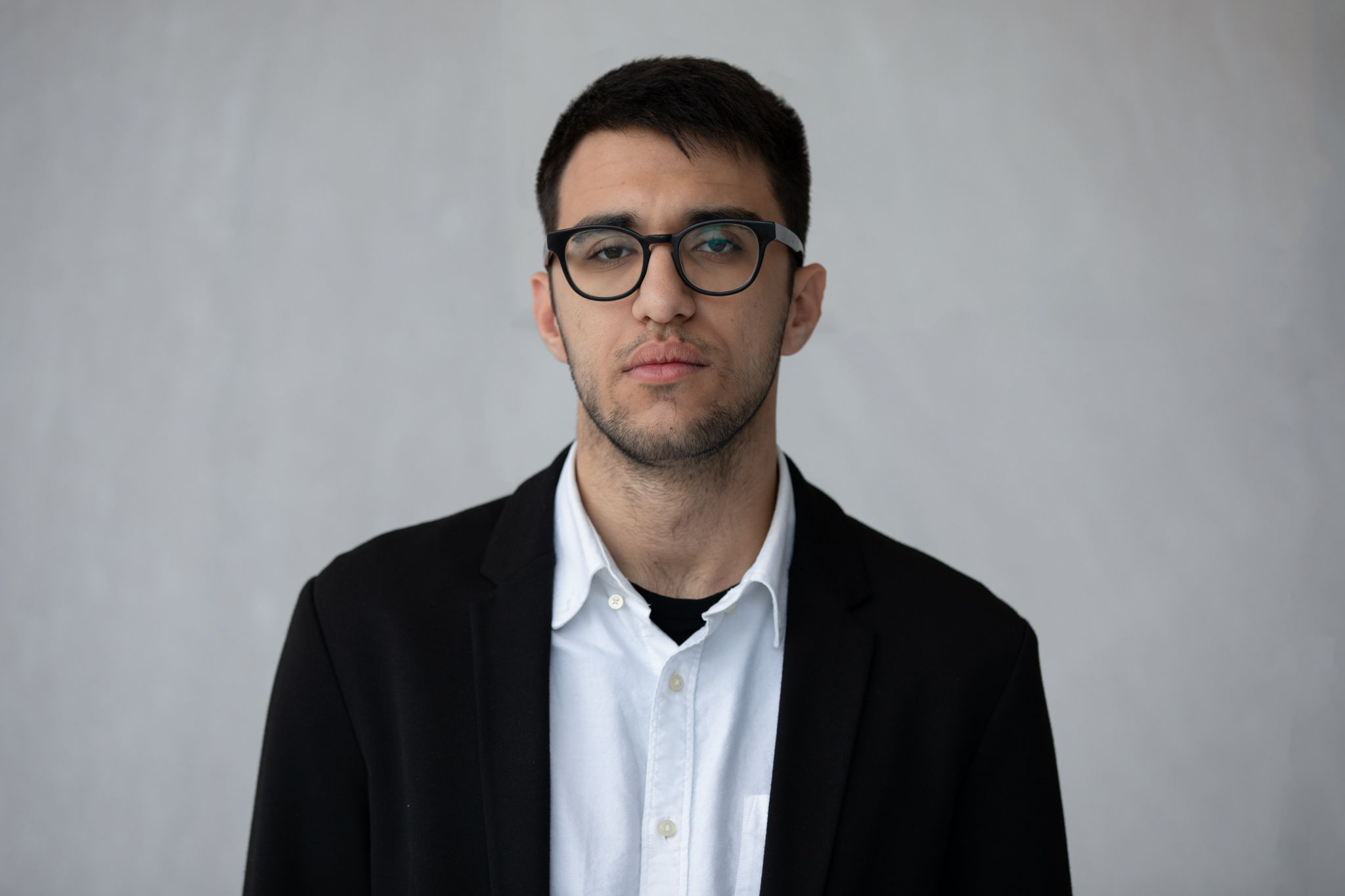
Video Team
George Mylonas and is pursuing a bachelor's degree in Journalism and Mass Media Communication at the Aristotle University of Thessaloniki, Greece. He has spent 3 years contributing articles and opinion essays on the university's online magazine. He has also written articles for a website created by a fellow university student called Thinking Abyss which gives voices to students who aspire to write articles about social topics. He has a wide range of interests, from geography to digital arts, from literature to modern cinema.

Audio Team
Alexandros Papakonstantopoulos is pursuing a bachelor's degree in journalism, media and mass communication at Aristotle University of Thessaloniki. He has worked as a researcher in social research about economical and political issues. He has also published articles in https://www.thinkingabyss.com/ regarding social research and political issues. He has a wide array of interests, ranging from European history to psychology, from Reinassance to Freudianism.

Story & Web Team
Irini is a first year student at the Aristotle University of Thessaloniki in the department of communication and mass media. She participated in the Aristotle University of Thessaloniki Model UN. Sh was a camper at YMCA's camp for five years and also attended for four years the executive school of YMCA. Furthermore she had worked at the 87th Thessaloniki international fair last September.
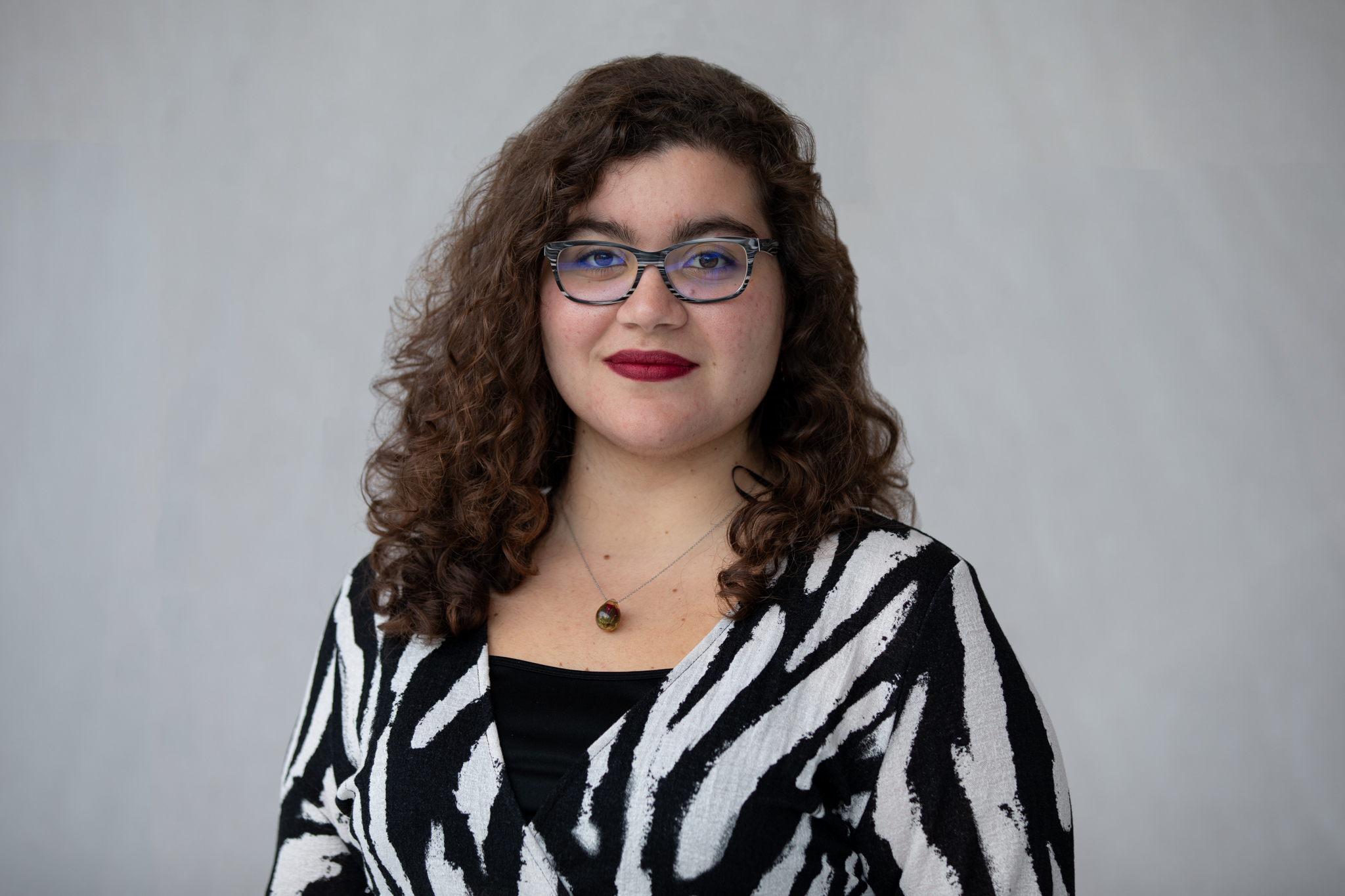
Video Team
Pinelopi Stolikidou is pursuing a bachelor's degree in Journalism & Mass Communications at Aristotle University of Thessaloniki. She has published stories in a variety of local media and has a small experience in social media content creation. She loves to listen, observe and learn. Her interests come at a wide range that includes cinema, theatre, history, photography, writing and research.
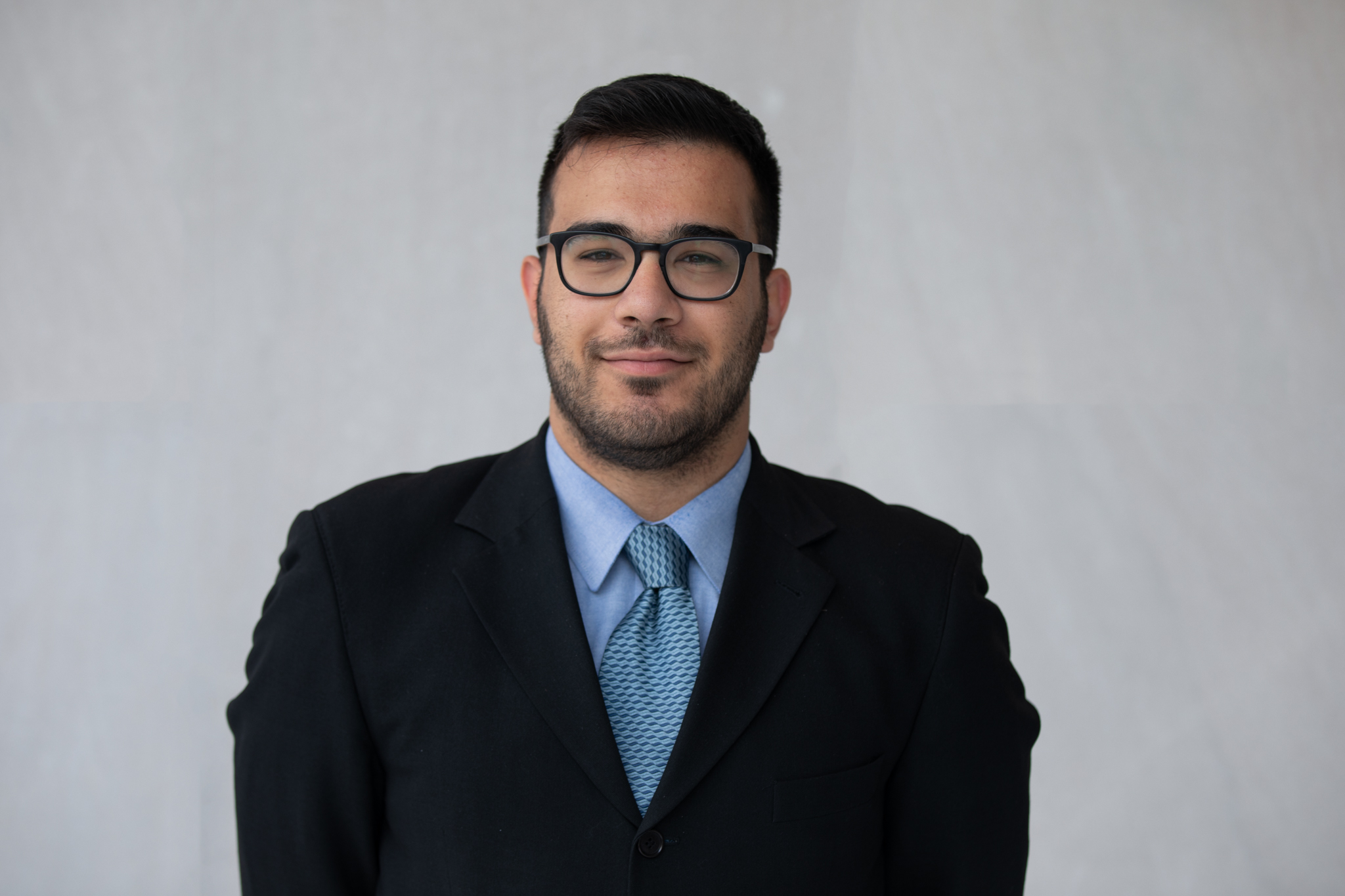
Data Team
Konstantinos Trapezanidis is pursuing a bachelor's degree in journalism, media and communication at the Aristotle University of Thessaloniki (AUTh), Greece. He has spent two years on the staff of G-Sports (a sports events statistics company based in Thessaloniki), as Assistant to the Operations Manager. Additionally, he has taken courses of political science in the same university and he has participated in numerous Model UN conferences (best delegate award). He has a wide array of interests, ranging from political communication to web design & development, from communication theory to international affairs.

Data Team
Spiros Panagiotou is pursuing a bachelor's degree in computer science and telecommunications at the National and Kapodistrian University of Athens. He has been a scholar from the University of Cambridge. He is also a journalist and founder of Onlynews, a website covering local and international news.
Special Thanks:
- The Stavros Niarchos Foundation (SNF)
- Aristotle University of Thessaloniki
- CSIS Humanitarian Agenda Program: Michelle Strucke & Nicolas Jude Larnerd
- CSIS iDeas Lab team mentors/staff:
Story: Mark Donaldson
Video: Shawn Fok
Audio: Cera Baker
Data: Fabio Murgia
Editorial: Mark Donaldson & Sarah Grace - CSIS AILA staff: Julieze Benjamin & Erin Delany
- AILA management: Donatienne Ruy
Photo Credits:
- Header photo: Created by Sarah Grace with assets from Prima91, Vladimir Liverts, Kaspars Grinvalds, ReneBot/Peopleimages - AI via Adobe Stock, and James Wakibia/SOPA Images/LightRocket via Getty Images
- The October 7 Attack: Abed Rahim Khatib/Anadolu Agency via Getty Images
- Shaping the Narrative: James Wakibia/SOPA Images/LightRocket via Getty Images
- From Television to TikTok: Jaap Arriens/NurPhoto via Getty Images
- Misinformation on Traditional & Social Media: Omar El-Qattaa/AFP via Getty Images
- Violent Rhetoric, Violent Actions: Scott Olson/Getty Images
- Conclusion: Laia Ros/Getty Images